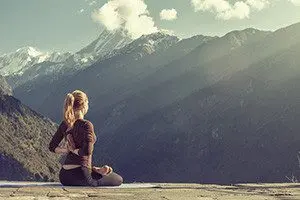5 effective relaxation methods

Friday, May 31th, 2019
We all face stressful situations whether at work or in our daily lives. It can be small inconveniences such as traffic jams or more serious concerns such as the illness of a loved one. Whatever the cause, the manifestation of stress is the trigger of hormones harmful to our body. If your heart is pounding, your breathing quickens, and your muscles tighten, here are 5 effective relaxation methods that may help you regain your inner calm.
Breathing exercises
Although breathing is innate, we breathe differently when our body is under stress. Breathing is usually rapid, constricted in the chest, and the diaphragm is contracted. The lungs are not completely filled with air.
Learning breathing exercises allows you to get out of this state and achieve relaxation of your body wherever you are. One of the exercises is to take long abdominal breaths slow and deep. For this exercise, you focus on your inhales and exhales while trying to lengthen them by a second each time. This practice will help you feel more relaxed and take decisions calmly.
Mindfulness meditation
Mindfulness meditation has become very popular in recent years. More and more people with anxiety, depression and pain are trying these techniques to improve their well-being. For this practice, start by sitting comfortably and focusing on your breathing. Draw attention to your mind and the present moment to let go.
Meditation can relax the body and mind by a relatively short period of time. In addition to calming the physiology of the body and helping the mind unravel its grip on negative stress-inducing thoughts, meditation brings long term benefits to people who practice it regularly.
Yoga postures
Yoga, like tai chi or qigong, combines rhythmic breathing with a series of postures and fluid movements. The physical aspects of these practices provide a mental focus that can help turn away from negative thoughts. Yoga can also improve your flexibility and overall balance.
Yoga combines meditation, breathing exercises, physical exercises and stretching to relax the whole body and mind. Due to the many stress reduction techniques involved in yoga, it has become one of the most popular practices because it brings immediate well-being and helps attack stress on several fronts.
The body scan
This technique combines progressive muscle relaxation with a focus on breathing. To start the body scan, choose a quiet place where you can lie down. After a few minutes of deep breathing, focus on one part of your body or one group of muscles both feet and legs or neck and shoulders. Mentally release any physical tension you are feeling in that particular place in your body. A body scan can help you become aware of the connection between your body and your mind.
Mental imagery
This relaxation technique invites you to create calming scenes in your mind. It can also be places or experiences that will help you relax. Just make sure you choose images that you find calming and which have personal significance. You can find free apps and online recordings of enjoyable scenes. Guided images can help you reinforce a positive view of the world and yourself. This technique can be more difficult for those with intrusive thoughts or who have difficulty creating mental images. However, it is through the exercises that you will be able to lead your mind towards these calming images.
Rather than choosing a single technique, it is recommended to combine several. Try to exercise for at least 20 minutes a day, although a few minutes is enough. The more you practice these relaxation techniques on a regular basis, the more benefits you will derive from them in order to increase your resistance to stress and achieve serenity.
Stephanie Haerts
Read also : PasseportSanté.net podcasts









